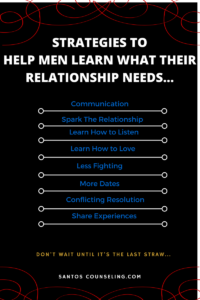What Causes Anger And What To Do To Manage It
ANGER is often connected to a number of areas.
Typically, when a person experiences anger, they are letting out a list of feelings and experiences versus solely reacting to what is happening at the moment.
Anger can impact your thoughts, feelings, and even your body.
I want you to think about the area in your body that experiences a sensation connected to anger. Such as feeling your fist tighten when you are experiencing anger.
The focus is to identify healthy physical practices that can work to alleviate the physical symptom. Basically, meaning we are going to develop ways to tame the physical tension that you experience physically.
- What does your body do when you experience anger?
For instance, when I experience anger I notice that my eyes twitch and my legs become restless.

How Counseling Can Help With Anger:
- Learn to utilize healthy coping skills.
- Explore key items that impact anger.
- Develop a healthy mindset.
- Reduce negative beliefs and thinking patterns.
4 Ways Deal With Anger
Anger Coping skill #1:
Carry something that you can squeeze. This is a great exercise to practice when experiencing anger. It’s up to you what you decide to carry. Some use balls, like a tennis ball, and others use a lemon.
The first step is to recognize that you are experiencing anger.
The second step is to take time to engage in thoughts that focus on placing your anger into the ball.
Anger Coping skill #2:
Stretch your body. Think about the location of your anger and do your best to stretch that area out. Below are stretches that you can practice. Use them as guidance with the overall focus to utilize stretching as a way to soothe the body when experiencing anger.
Anger Coping skill #3
Push on a wall. This is an odd way to relieve anger, yet it has been shown to work. Next time you are feeling upset notice anger growing to find a wall. Stand next to it and push against it. As you push the wall, think to yourself that you are pushing the anger out. Inhale and exhale during each push.
Anger Coping skill #4
Soothing massage. During this exercise, take time to identify where your body holds anger. Think about where your body experiences anger when triggered.
Once you identify the location, take time to soothe it with a gentle supportive rub. Let’s say that you feel the tension in your arms. Take 5 minutes to sit with yourself. During the 5 minutes start with a gentle massage that goes from your hands to your shoulders.

What Triggers Anger
Anger is often triggered by internal or external factors. These are factors that cause a person to experience anger.
Anger can show up in many ways as discussed in this workbook. To tame anger, we must take a step back and work to build awareness. Knowing your triggers works to help you use coping skills more effectively.
4 Common Things That Cause Anger
1. Receiving an insult.
This typically does not feel good and can right away cause walls to go up and a need to attack the other person.
2. Conflict.
Some people are triggered by conflict. For instance, you may experience a rapid heart rate when in a situation of conflict.
3. Skipping meals.
This can lead to a decrease in sugar which tends to make a person feel jittery and on edge. At times people will use the term “Hangry”.
4. Financial challenges or concerns.
Such as growing up in poverty and feeling triggered when the bank isn’t at what you want it to be or when your partner spends money.
For more supportive reads on managing anger follow the links below:
Ways To Manage Anger Without Getting Stuck
Anger Management Private Training
Therapy Activity Helping Your Child With Processing Emotions




